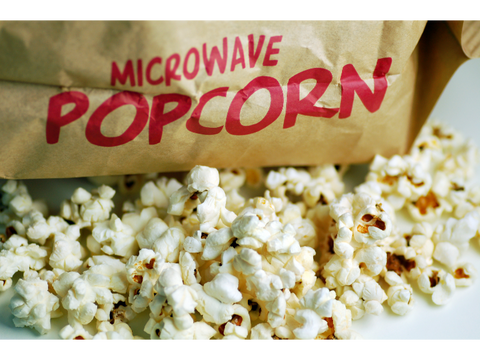
Can I Have Popcorn if I am Trying to Lose Weight?
Navigating what you should and shouldn’t eat when trying to lose weight can be challenging, but one thing you don’t have to give up during your weight loss journey is popcorn! Instead of eliminating it, all you need to do is adjust how much you eat and what you eat with it to make sure you stay on track.
Why we love popcorn!
Popcorn is a whole grain that is high in dietary fiber, low in calories, and contains polyphenols, which are antioxidants linked to better blood circulation and digestive health.
Popcorn also contains vitamins and minerals, including calcium, potassium, vitamin A, and vitamin K. When it is air-popped and consumed in the appropriate serving size it is considered a carbohydrate serving on GOLO!
The healthiest type of popcorn is air-popped. We suggest that you stay away from the pre-packaged microwave version. You can make it with a popcorn maker, on the stove or even in the microwave using whole popcorn kernels.
Why microwave popcorn is unhealthy

While the convenience of microwave popcorn makes it a desirable option, the negatives far outweigh its benefits.
Chemicals
Many microwave popcorn bags are lined with chemicals known as PFAS. They help to keep the bag from burning. Unfortunately, there is evidence that these toxic chemicals can leach into your popcorn while it’s popping.
PFAS are referred to as ‘forever chemicals’, because they break down very slowly, accumulating both in the environment and within human bodies.
Some popcorn manufacturers have stopped using certain PFAS, but according to a 2020 study, microwave popcorn almost always contains a certain amount. Also, there’s no guarantee the chemicals replacing PFAS are any safer.
Ingredients
The best thing about air-popped popcorn is that you control how you make and season it. The same can’t be said for the microwave popcorn, which usually lists unhealthy oils like palm oil and vegetable oil as an ingredient. These oils are high in saturated fat and can make weight loss harder.
Microwave popcorn may also contain additives, sodium, and artificial flavoring, making it an unhealthy food choice.
How much popcorn can I eat?
To avoid overeating popcorn, you should decide on your serving size before you start eating. An appropriate serving size is approximately 2 cups of popcorn, which is measured after popping.
What’s great about homemade popcorn is that you can make as much as you want and store it in a reusable bag for later. Although popcorn is made from corn, it is still considered a carbohydrate, which means you should pair it with a protein to make it part of a balanced meal.
Want to create a movie night meal? Try this!

It will seem like you are cheating, but this is a complete and balanced GOLO meal!
- Shrimp
- Hummus
- Cherry tomatoes & guacamole
- 2 cups popcorn topped with parmesan cheese
How can I make air-popped popcorn at home?

Stove-top: It’s easy to pop your own popcorn on the stove! All you need is a large pot, a tight lid and popcorn kernels. You could also buy a stove top popcorn popper to make the process even easier.
Microwave: If you like the convenience of microwave popcorn but don’t want to make it on the stove, try a microwaveable glass or silicone popcorn popper. They are easy to use and make for quick clean up!
Popcorn maker: There are many countertop popcorn makers on the market that make healthy popcorn quickly and with little clean up.
Can popcorn help with weight loss?
Homemade popcorn contains plenty of fiber, vitamins, and minerals. It’s acceptable to eat on GOLO. If you don’t want to add butter or salt to your popcorn, you can add cinnamon, chili powder, or Parmesan cheese for some extra flavor.
So the next time you’re getting ready for movie night, skip the convenience and chemicals of microwave popcorn and pop your own!
Sources:
Information for this article was collected by the health and wellness experts at GOLO using the following sources:
Heart.org
GOLO is not intended to diagnose, treat, prevent or cure any illness or disease. This blog provides general information and discussion about health and wellness related subjects. The words and other content provided in this blog, and in any linked materials, are not intended and should not be construed as medical advice. GOLO encourages you to consult a doctor before making any health changes, especially any changes related to a specific diagnosis or condition. All opinions and articles linked to and from this page are those of the individuals concerned and do not necessarily represent those of GOLO, LLC or its employees. No responsibility can be accepted for any action you take or refrain from taking as a result of viewing this page. GOLO will not be liable for any errors, losses, injuries, or damages from the display or use of this information. These terms and conditions are subject to change without notice.
Tagged with: Food, Home, Tips & Tricks
October 01, 2023